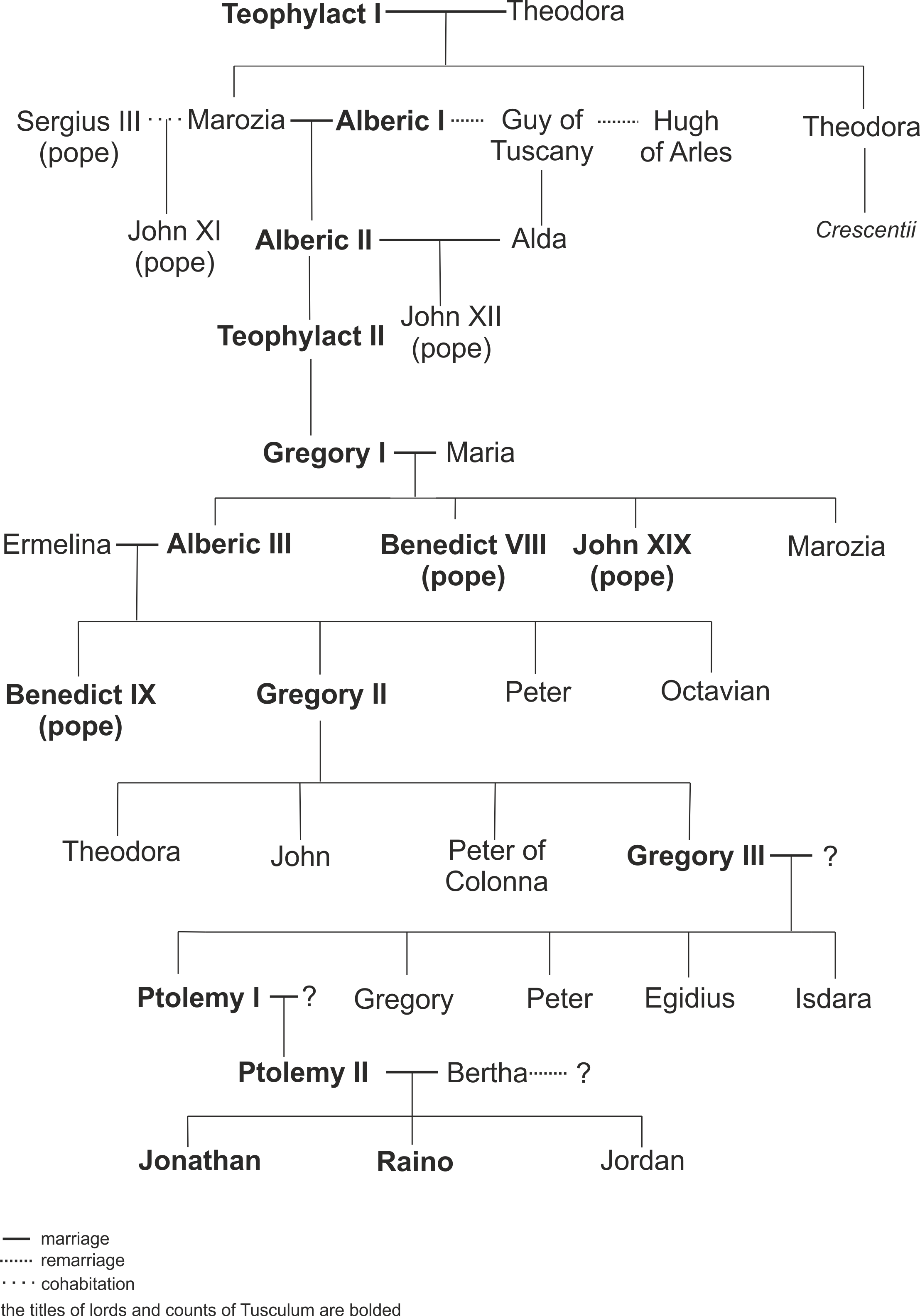|
Theophylact, Count Of Tusculum
Theophylact I (before 864 – 924/925) was a medieval count of Tusculum who was the effective ruler of Rome from around 905 through to his death in 924. His descendants controlled the papacy for the next 100 years. Biography Theophylact was the hereditary count of Tusculum, a small hill town near the vicinity of Rome. He is mentioned for the first time in a document of 901 as '' palatine iudex'' (''palace judge'', or leader of the militia) of Emperor Louis the Blind. He remained in Rome, commanding a group of soldiers after the emperor's return to Provence in 902, and was prominent in the overthrow of Antipope Christopher in January 904, whom he very likely ordered to be killed whilst in prison later that year. Theophylact formed an alliance with Duke Alberic I of Spoleto, and with their combined backing, Pope Sergius III was elected in Christopher's place. During his pontificate, Theophylact became Sergius’ '' sacri palatii vestararius'' and ''magister militum'', effectivel ... [...More Info...] [...Related Items...] OR: [Wikipedia] [Google] [Baidu] |
Count Of Tusculum
The counts of Tusculum, also known as the Theophylacti, were a family of secular noblemen from Latium that maintained a powerful position in Rome between the 10th and 12th centuries. Several popes and an antipope during the 11th century came from their ranks. They created and perfected the political formula of noble-papacy, wherein the pope was arranged to be elected only from the ranks of the Roman nobles. The Pornocracy, the period of influence by powerful female courtesans of the family, also influenced papal history. The counts of Tusculum remained arbiters of Roman politics and religion for more than a century. In addition to the papal influence, they held lay power through consulships and senatorial membership. Traditionally they were pro-Byzantine and anti-Germanic in their political affiliation. After 1049, the Tusculan Papacy came to an end with the appointment of Pope Leo IX. In fact, the Tusculan papacy was largely responsible for the reaction known as the Gregorian ... [...More Info...] [...Related Items...] OR: [Wikipedia] [Google] [Baidu] |
